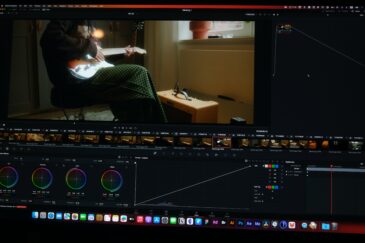Dubit CEO Matthew Warneford estimates that within a decade, a million people will make their living from the metaverse. Another 100 million will build in immersive spaces for their own fulfillment.
Can building in virtual worlds help make a better real world?
The iCan Generation

A full-fledged metaverse is a long way off, but Generation Z and the first wave of Gen Alpha are deeply engaged in using its emerging individual elements for play, work, learning, socializing and communicating. They’re native players and builders on social gaming platforms like Roblox, Minecraft and Fortnite. They’re power users of YouTube and TikTok, not just viewing but creating videos of their own.
Gens Z and Alpha demand authenticity from the brands and content that seek to engage with them. They are equipped with a strong sense of justice, responsibility, and urgency. David Hogg, the 23-year-old Parkland High School shooting survivor and gun violence activist says, “I’m not powered by hope. I’m powered by the fact I have no other choice.”
Today, the youth who are driving movements like March for Our Lives, Fridays for Future, the Iranian women’s rights movement, and others, are using the digital platforms that have been integral to their lives in order to further the causes they believe in.
Further, when young people aren’t able to find the types of games or experiences they and their friends want, they create them. One might call this intrinsically-motivated mastery “the learnification of gaming,” and it yields skills that are proving valuable in the current-day workforce.
All this is why Dubit refers to the 8-to-young-adult cohort as the “iCan Generation.”
Quality = Relevance
When Dubit asked teens to define “quality” in media, they spoke of personal relevance over production value. Young people demand authenticity. A million-dollar series won’t engage an audience if the topic isn’t of immediate interest or importance, but a TikTok or YouTube shot on a smartphone can get millions of views and shares from those who find it authentic and germane.
The second key to quality was alignment with the platform: anyone making TikTok, YouTube, or even UGC social game content must understand the space’s unique purpose, genres and visual vocabulary.
Both of these factors point to the power to influence held by those born into the iCan Generation.
The Builder Economy

At Dubit, we predict that these young people will develop a “builder economy.” Young creators are already making games, experiences, and videos on their own, and they are entering a workforce changed forever by the pandemic’s abrupt shift to remote teams. Going forward, they’ll be less likely to work within a single company. Instead, studios will coalesce specialist teams for specific projects, that disband when finished. Developers, designers, artists, musicians, educators, researchers, and others may be part of multiple, recombinant “Oceans 11” teams assembled for particular skills.
This will provide builders with the flexibility to balance their work across income-generating projects and passion projects. As the distributed and user-run platforms of Web3 emerge, young people will create communities around shared concerns or passions. They’ll be able to build shared strategy and take action via decentralized autonomous organizations (DAOs). Teams will be symbiotic, not top-down.
An additional benefit to these virtual and decentralized communities is that they can – and must – engage diverse global cultures as creators, not just consumers. Whether the cause is climate activism, education equity, economic inequality, or anti-racism, lived experience will be critical to authenticity and effectiveness. Virtual communities can be safe places, even when one’s real-life community isn’t.
Increasingly, the tools for creating games, experiences, world-building, and work spaces are open-source or freely available worldwide, removing one economic barrier to equity of opportunity. Generative AI has the potential to simplify the literacies needed to bring ideas to life.
Tools for Change: Web2 to Metaverse to Web3

Today’s youth are already experts in navigating the digital platforms that suit their goals.
Generations Z and Alpha migrate almost seamlessly between their real and online worlds. A study by Roblox and Parsons School of Design revealed that young people value virtual goods almost equally with physical goods: they use virtual clothing and other items for self-expression and connection. Diverse representation and authenticity are of paramount importance.
TikTok, for example, offers immediacy and impact in a “snackable” format; its users have developed a variety of visual and aural vocabularies that signal authenticity. Dutch producer Jan-Willem Bult teaches young people worldwide to report news and emphasizes TikTok because it’s so personal and direct: “reporters now can get as close to a user as their friends do.”
Social games like Roblox or Minecraft offer immersive spaces for hands-on exploration or creation around critical world issues. UNICEF, the United Nations Climate Change commission and NGOs like the Playing for the Planet Alliance all have organized game jams or competitions around environmental issues. GenZ female creators who started building in Roblox as pre-teen girls are not only making the experiences they care about (including around empowerment, mental health and conservation); they’re working from within to make the gaming industry more equitable.
The record-setting adoption of generative AI platforms for art, writing and coding is quickly making it possible for anyone to be not just an “influencer” but a builder. As blogging sites powered a 1-dimensional User Generated Content (print) revolution; and as smartphone cameras, consumer-friendly editing software, and democratic content platforms like YouTube and Vimeo sparked a 2-dimensional UGC (video) torrent; AI and the social gaming platforms are the foundation of the current rise of 3-dimensional UGC (immersive experiences).
And soon, the coming metaverse and Web3 will accelerate this movement and amplify emerging voices.
Virtual reality is sometimes referred to as “the empathy machine” for its ability to fully immerse a person in another world, whether that of a refugee or as a piece of a dying coral reef. VR production and high-quality goggles are still too expensive for mass global adoption, but we can look not far down the road for young people using social VR to invite peers to stand beside them in experiencing their lives, rather than looking through a distancing flat screen.
Augmented reality – a tool we all carry in our “pocket PC” smartphones – can enable young people to “tag” their world with stories, information, or advocacy. These may be site-specific, such as informing passers-by of an item of history or nature; or they may be projected anywhere, like the Kinfolk app that offsets the underrepresentation of people of color in public statues.
From Virtual to the Real World
At the same time, we need to be careful not to conflate facility with media tools with the critical thinking needed to use them wisely. It’s long past time to make media literacy – how to access, analyze, evaluate and create with any tool, current or yet-to-emerge – a central part of school curriculum, across subject areas.
We also must be careful not to treat virtual spaces as a utopian escape from real-world problems or dystopia. The metaverse itself can’t solve global challenges, but it can spark awareness, enhance knowledge, level up engagement and caring, and build structures for taking action. It can connect people and ideas on a scale and degree of diversity never before possible.
Real-world change is hard work, requiring every tool at our disposal to make progress. If it takes a village, why not employ the largest “village” ever created – the internet and emerging metaverse.

David Kleeman is Senior Vice President of Global Trends for Dubit, a metaverse studio and consultancy. He is a 35-year children’s media veteran – a strategist, analyst, author and speaker, connecting ideas and people in media, education, research and child development.

